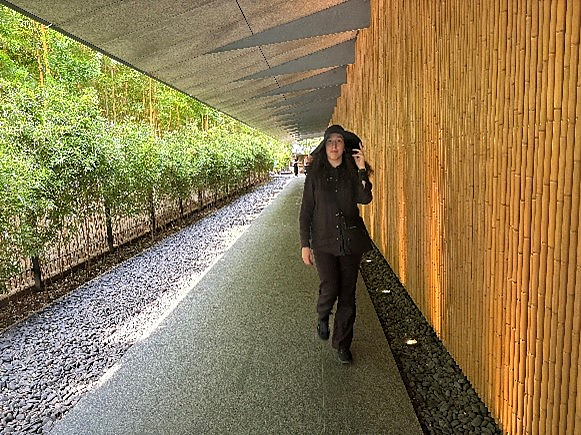Light and Shadow at the Nezu Museum
Text by student Madeliene Symons
Many of Kengo Kuma’s projects utilize latticework to diffuse the light and create the impression of a forest. In the case of the Nezu Museum, the vast panes of glass looking out onto the garden serve this same purpose, connecting the constructed elements of the building to the natural elements of the garden. The galleries themselves have no windows for the conservation of the artifacts, and the only light therein is that which illuminates them, leaving the center of the gallery where the visitors circumnavigate in shadow.The overall effect is that of stepping into secret caves to view the treasures within, and then emerging into light and air.
The proportions of the museum echo the traditional buildings in the garden allowing the modern structure to blend into its surroundings. The path to the museum is a walkway bordered on one side by bamboo that turns sharply into the entrance of the building. This path effectively transitions the visitor from the crowds and commerce of the surrounding area to the experience awaiting them inside.
The basement of the museum has a back entrance into the garden at the base of the glass and steel stairs, the same as the cool materials throughout the upper portions of the building, but a substantial section has no windows, and is instead entirely paneled with pressed bamboo creating a warmth that feels like one is dwelling within a tree.
The Nezu Museum could very well be regarded as Kengo Kuma’s magnum opus, and is a masterclass in the blending of the modern and traditional to create something truly timeless.










